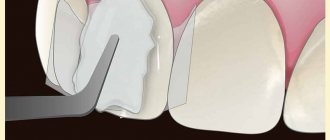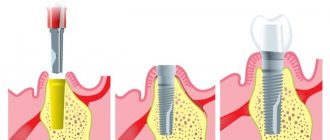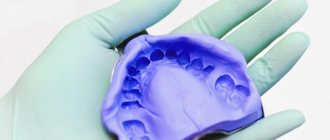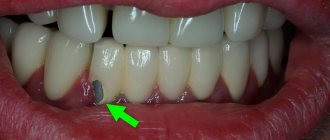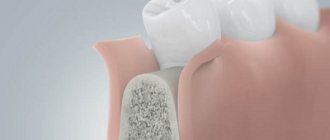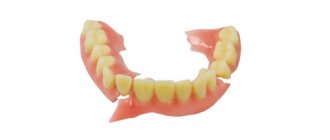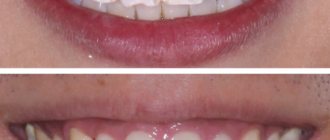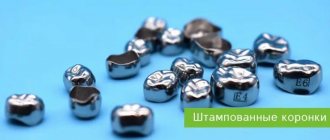These materials for molding jaws or individual teeth help dentists in prosthetics. They are designed to be convenient for both the patient and the doctor. The main task of alginate is to most accurately reflect the shape of the patient’s prosthetic bed. What are “alginates”, how do they differ from the means previously used in dentistry for taking dental impressions, their pros and cons - we will talk about this further.
Before the advent of alginate, dentists used plaster of Paris. However, it has both advantages and disadvantages. For example, the disadvantage of gypsum is that it is difficult to remove from the oral cavity. In addition, the plaster often broke when removed. Fortunately, it was replaced in the early 40s of the 20th century by elastic and elastic hydrocolloids. The mentioned alginates belong to them. This innovation is making a real splash in prosthetics and makes life much easier for dentists who were previously forced to painstakingly tinker with plaster. Finally, the possibility of taking entire oral impressions with undercuts has become a reality. Now dentists are actively using a variety of advanced mixtures based on alginates.
What are “alginates”
Alginate materials are produced on the basis of alginic acid, which is a product of the processing of seaweed. Alginic acid does not dissolve in basic organic solvents, including water, but alginates of its salt still readily dissolve in water, releasing viscous sol-gel substances. It is this property of alginates that allows them to be widely used in production.
Upin-Premium
Alginate impression material
Ingredients: Alginate salt, diatomaceous earth, additives, pigments
Characteristics : Upin-Premium is a hydrocolloid alginate impression mass for use in prosthetic dentistry and orthodontics.
The impression mass has a pleasant menthol taste.
Plaster models obtained from casts using Upin-Premium material have a smooth, hard surface with excellent reproduction of details.
Indications:
- Impressions for the manufacture of partial removable dentures.
- Impressions for the manufacture of complete removable dentures.
- Working impressions for making individual spoons.
- Impressions in orthodontics for the manufacture of removable appliances.
- Impressions for making educational models.
- Impressions for making bite templates.
- Impressions for the manufacture of temporary bridge structures made of plastic.
Contraindications: in case of hypersensitivity to some components of the material.
Side effects: in exceptional cases, if the alginate impression mass gets on the mucous membrane, temporary irritation, dry mouth, etc. may occur.)
Advantages and disadvantages
The advantage of alginates is the viscosity of the structure, provided, of course, that the prescribed proportions are observed. Also, the accuracy of conveying the relief of the prosthetic dental bed. The material is elastic to obtain an impression of the undercut. Alginate material is stored indoors, but in tightly closed packaging.
Alginate materials have a relatively low cost, but if used correctly, high-quality plaster models can be obtained. Thus, these materials not only accurately represent the prosthetic bed and are easily separated from the plaster model, can be disinfected to a limited extent and are quite elastic in structure, but also, most importantly for dentists, they are easy to use.
When casting plaster models, it is recommended to use them as quickly as possible. This leads to difficulties with disinfection of the material.
The hardening reaction begins immediately when the powder and water are mixed. The result of the reaction is a material with an irreversible three-dimensional structure. Therefore, alginates are unable to return to their previous state and are used once. They also do not adhere well to a spoon, take time to shrink, and have low tensile strength. However, the latter is quite relative. Sometimes it even turns, on the contrary, into an advantage.
Moreover, the time during which the alginates harden will directly depend on the mass fraction of free calcium ions in the mixture. Thus, by adjusting this ratio, it is possible to change the rate of hardening of the impression mass. Typical working time for alginate materials is two to five minutes.
How to apply alginate masks
HannaNes/Depositphotos.com
Cleanse your face
This is where makeup remover milk, micellar water, or any other product you use will help you. Treat your eyebrows and eyelashes with Vaseline or the thickest cream you have in your arsenal. To ensure that the alginate mask penetrates deep into the skin, you can steam your face and apply an emulsion.
Apply the mask itself
It is recommended to do this only after the emulsion has been absorbed. At this stage, take alginate powder and serum (if there is no serum in the kit and simple mineral water is needed to dilute the mask, take it in equal proportions) and mix. Apply the composition in a horizontal position; the muscles of your face and neck should not be tense. It is better to do this with a spatula, ideally taking into account the massage points. Do not try to apply the mask with your hands.
Alginate masks have a strong plasticizing effect, so they harden on the face within 5–10 minutes.
You will feel a feeling of tightness in the areas of application, it may feel like rubber has frozen on your face, but this is completely normal.
Remain in the original position for half an hour, after which the mask can be removed.
Take off your mask
Grab the free edge of the mask on your chin and lift it towards the hair area with a quick jerking movement. This process may cause some discomfort, but the results are worth it.
Treat your skin
To ensure your face reacts normally to the alginate mask, after removing it, apply your regular day cream that matches your skin type. The layer should be very thin.
Usage
First, you should carefully select the impression tray. Since plastic spoons should not be used when working with alginate masses, it is better to choose a plastic product for the job. Moreover, the size of the spoon should be such that the impression in the thinnest place is less than five millimeters. The adhesion force to the spoon material is not enough for alginate materials. Mechanical retention is usually used.
Taking an impression
There are mixing systems that make the job easier and the result more consistent, however, they do not improve the quality of the finished material.
Thus, the stages can be distinguished:
First you need to shake the powder to mix it well. Then pour the required amount of water into the container. Then add powder, the amount of which is consistent with the instructions. Mix. Stir the mixture for 30-40 seconds. The finished mixture is placed in a spoon, and the paste layer should be more than five millimeters thick. A spoonful of the mixture is then placed into the patient's mouth to make an impression. And finally, only after this the finished impression is taken, which is controlled by the dentist, cleaned and disinfected.
In order for the impression to be of high quality, it is necessary to follow the ratio of mixture components specified in the instructions for the preparation. The product also comes with dosage containers, which are best used when mixing. If the water is harder than distilled water or the water temperature during mixing exceeds 23C, then the mixture processing time should be reduced.
How to use alginate masks correctly
If in front of you is a bag with gel-like contents, then you bought an alginate mask that is ready for use. It has a shorter shelf life and must be applied immediately after opening the package, otherwise after 5-7 minutes it will become more like rubber and it will not be possible to apply it. Make sure that the bag is tightly sealed, because if air gets into it, then such a mask will not last long.
You can apply an alginate mask no more than twice a week, and to achieve the best results, it is recommended to carry out a full course. Depending on the manufacturer and individual skin characteristics, this can be from 7 to 20 masks.
Do not attempt to flush a mask removed from your face or body down the toilet or sink. It should only be thrown into the trash bin, otherwise you are guaranteed to get clogged.
If you decide not to go to the salon, but to make a mask at home, then buy a special bowl with a cosmetic spatula to mix the contents.
Before diluting the alginate mask, prepare your face in advance so that the mass does not have time to dry out.
Curing process and curing reaction
In the process of interaction with water of the powder mixture, a chemically active reaction begins, the result of which is strong transverse adhesion of polymer chains and the formation of an impact-resistant, three-dimensional structure.
Such connections cannot be broken by trying to redirect the structure to its original linear state.
Consequently, these hardening processes can be classified as irreversible, and this drug can be used once and only according to a sequential scheme: mixture - gel mass - chemical processes.
The curing reaction proceeds as follows . Calcium sulfate dihydrate supplies calcium ion elements for cross-linking processes , due to which the sol is transformed into a gel consistency. The ions begin to be partially released from the aqueous base.
The working period and time frame for final hardening of the composition are determined by the rate of formation of ions and their tendency to form transversely.
Accelerated dissolution of sulfate substances could produce a composition unsuitable for working hours. To prevent these phenomena, sodium phosphate was introduced into the drug component . It has a sedative effect on the explosive primary rate of formation of calcium ions.
In such a situation, phosphate performs an inhibitory function ; its concentration can regulate the hardening speed and modify the impression material.
The processes of bringing products into a solid state entail a change in the acidic background in the oral cavity.
As it hardens, this indicator drops, which helps to give a visual assessment of the action of the described processes and allows you to regulate the time of dental work with the material .
Alginate for impressions: the best offer for dentists
In order to make a high-quality impression, alginate masses are used in dentistry - special masses that have plasticity and elasticity. This material is used to take impressions for prosthetics and bite correction.
Today, doctors have access to new impression materials that have a number of advantages. But most doctors continue to use alginates in their work - convenient, practical, inexpensive masses for making impressions. Alginate mass for impressions does not require special conditions for use; it is much easier to work with than innovative silicone fillers. An important advantage of alginates is their natural origin. The raw material for the production of this impression mass is seaweed.
Among the important advantages of alginate impression masses, the following should be noted:
- holds its shape well;
- tools do not stick to the substance.
Alginate impression mass is one of the most used materials and not every doctor can afford to buy it at a high price. Given the high consumption of material, every specialist strives to buy good, high-quality raw materials for impressions at a lower price. Today you can do this in the All4dental online store. We do not work with intermediaries and offer you high-quality materials at a price significantly lower than the cost of similar products at offline points of sale.
Beneficial features
Alginate masks have the following positive effects on the face:
- relieve inflammation;
- nourish the skin and restore its protective function;
- constrict blood vessels, causing minor irritations to disappear;
- remove harmful substances;
- normalize the balance of minerals at the cellular level;
- break down excess fat, which effectively eliminates double chin;
- improve complexion;
- eliminate swelling;
- get rid of wrinkles and folds;
- make the skin elastic and smooth.
To get only the benefits of the procedure, you need to properly prepare the product and know how to dilute the alginate mask.
